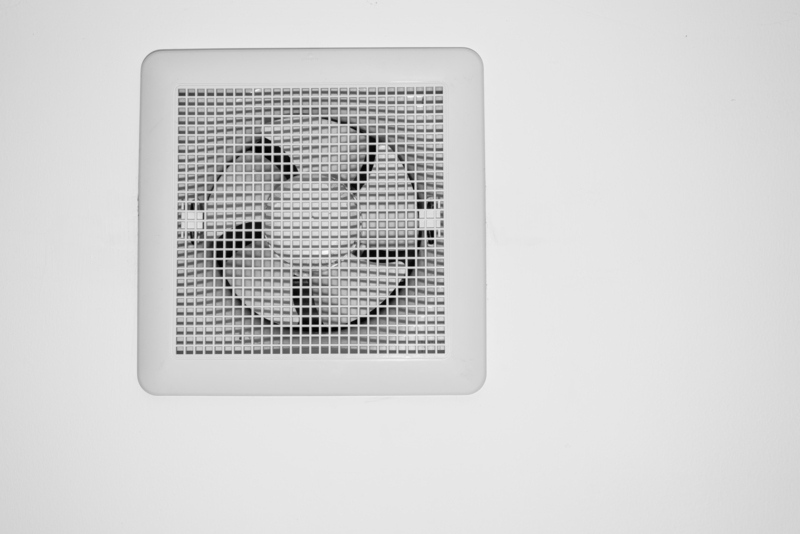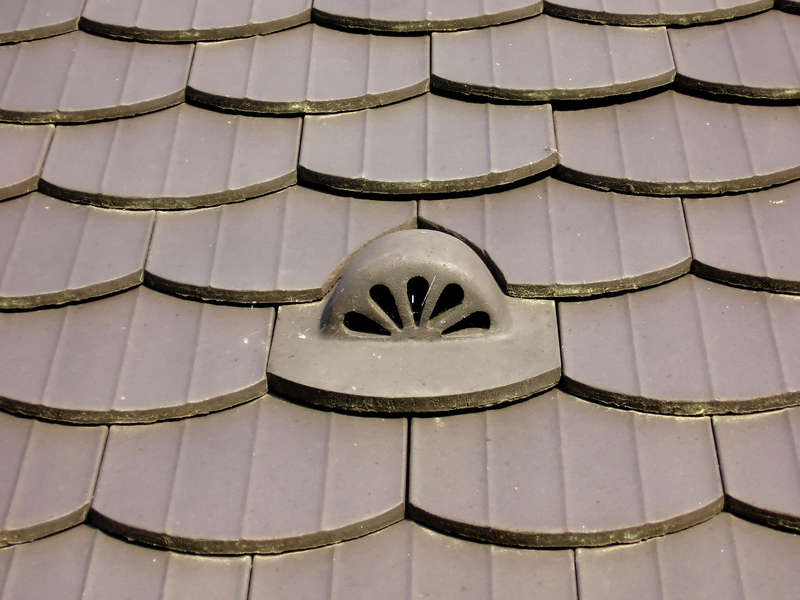Step-by-Step Tips for Removing Mould from Window Sills
Posted on 20/06/2025
Step-by-Step Tips for Removing Mould from Window Sills
Mould growth on window sills is a common household issue, especially in areas with high humidity or inadequate ventilation. Not only does it look unsightly, but it can also lead to respiratory problems and damage your property if not handled correctly. This comprehensive guide will provide easy-to-follow, step-by-step tips for removing mould from window sills. Whether you're dealing with black mould or other fungus types, our guide will help you restore your home to a safe and healthy state.
Understanding Mould on Window Sills
Before diving into the removal process, it's crucial to have a basic understanding of why mould grows on window sills. Mould spores thrive in damp, dark, and poorly ventilated areas. Condensation on windows, leaky frames, and high indoor humidity can all contribute to the problem. Knowing the causes will help you not only remove mould but also prevent it from coming back.
What is Mould?
Mould is a type of fungus that spreads by releasing tiny spores into the air. These spores settle on damp surfaces and begin to grow rapidly. Mould can appear in various colors, such as black, green, or white, but black mould on window sills is typically the most stubborn and hazardous.
Why Your Window Sills Are at Risk
- Condensation from the windows creates a moist environment.
- Leaking Frames allow water to seep in, keeping the sills wet.
- Poor Ventilation in rooms like bathrooms or kitchens escalates mould growth.
- Organic Material such as dust and wood acts as a food source for mould.

Essential Tools and Materials for Mould Removal
Before you start, you'll need to prepare your cleaning area and gather the necessary materials. Using appropriate tools ensures that you remove mould from window sills effectively and safely.
Materials You Will Need:
- Rubber gloves
- Protective goggles and mask
- Scrub brush or old toothbrush
- Spray bottle
- Microfiber cloths or paper towels
- Bucket filled with warm water
- Cleaning agents (white vinegar, baking soda, hydrogen peroxide, or a commercial mould remover)
- Plastic sheet or old towel (to protect the floor)
- Small vacuum cleaner with HEPA filter (for dry spores)
Tip: Always test any cleaning solution on a small spot to ensure it does not damage the paint or window finish.
Step-By-Step Process for Removing Mould from Window Sills
Here, we outline the best methods to get rid of mould on window sills safely. This approach works for both wooden and uPVC window sills, but delicate materials require extra care.
Step 1: Ensure Safety and Prepare the Area
- Open windows to provide ventilation and let fresh air circulate.
- Wear your rubber gloves, goggles, and face mask to avoid contact with harmful mould spores.
- Lay down a plastic sheet or towel to protect the area beneath the window sill.
- Use a vacuum with HEPA filter to carefully vacuum loose mould spores if present.
Step 2: Choose Your Mould Removal Solution
There are several safe and effective cleaning solutions. Here are the best options:
- White Vinegar: Fights mould on window frames and sills thanks to its natural anti-fungal properties.
- Hydrogen Peroxide (3%): Works as a powerful disinfectant for stubborn black mould patches.
- Baking Soda: Excellent for scrubbing away residue and eliminating odours.
- Commercial Mould Removers: Specially formulated products available at most hardware stores.
Never mix vinegar and hydrogen peroxide, as this may release harmful fumes!
Step 3: Apply the Solution Generously
- Pour your chosen solution into a spray bottle and spray the affected area until it is thoroughly soaked.
- Let it sit for 10-15 minutes to allow the solution to penetrate and kill the mould deeply.
Step 4: Scrub Off the Mould
- Using a scrub brush or old toothbrush, gently scrub the window sill to loosen all mould and mildew buildup.
- If the stain is stubborn, reapply the solution and scrub again, focusing on corners and crevices.
- For wooden sills, avoid excessive water to prevent further damage.
Step 5: Wipe Clean and Rinse
- Use a clean, damp microfiber cloth to wipe away all mould residue and cleaning solution.
- Rinse the surface with warm water and wipe dry immediately using a dry cloth or paper towels.
Step 6: Disinfect and Dry the Area
- Spray a disinfecting solution (such as diluted hydrogen peroxide) on the area for extra mould prevention.
- Let it air dry with windows wide open, or use a fan to speed up the drying process.
Step 7: Dispose of Cleaning Materials Safely
- Throw away any disposable cloths, paper towels, or wipes used during the cleaning process.
- Sanitize reusable items like brushes in hot water and detergent.
Finishing Tip: Regularly inspect your window sills for any signs of mould regrowth.
Natural Remedies for Removing Mould from Window Sills
If you prefer an eco-friendly approach, certain natural products are highly effective for eliminating mould on window sills:
- Lemon Juice: Has mild acidic properties to kill mould spores.
- Tea Tree Oil: A potent anti-fungal that works when diluted and sprayed on the affected area.
- Baking Soda Spray: Mix with water for a gentle yet effective solution, especially on delicate surfaces.
DIY Natural Cleaning Solution Recipe
Mix 1 part white vinegar, 1 part water, and 10 drops tea tree oil in a spray bottle. Apply to the mould-affected window sill, let it sit for 1 hour, then wipe clean and dry thoroughly.
Preventing Mould Growth on Window Sills
After you remove mould from window frames and sills, it's essential to take preventive steps against future infestations:
- Reduce indoor humidity--use a dehumidifier if necessary.
- Keep windows open when possible to increase airflow.
- Repair leaks and seal gaps in window frames promptly.
- Wipe window condensation daily, especially during cold months.
- Regularly dust and clean window sills to eliminate organic matter.
- Consider using anti-mould paint or sealant on susceptible surfaces.
Tip: Place moisture absorbers like silica gel packs near problem windows to reduce dampness.
When to Call a Professional Mould Remediation Service
While removing mould from window sills is often manageable, certain situations require expert help:
- The mouldy area covers more than 1 square meter.
- Stubborn black mould returns repeatedly even after cleaning.
- You notice mould spreading inside walls or frames.
- Allergic symptoms worsen while cleaning, despite protective gear.
Professional mould removal specialists use industrial-grade solutions and equipment, ensuring a complete and safe clean-up.

Frequently Asked Questions About Mould Removal from Window Sills
1. What causes persistent mould on window sills?
Persistent mould is typically due to ongoing moisture issues, such as leaking window frames, condensation, or inadequate ventilation. Addressing the root cause is important to prevent recurrence.
2. Is black mould on window sills dangerous?
Black mould (Stachybotrys chartarum) can pose significant health risks, especially to those with respiratory problems. Prompt removal and preventive measures are crucial to protecting your health.
3. How often should I clean window sills to avoid mould?
You should clean window sills at least monthly, or more often during damp seasons, to prevent the build-up of dust, dirt, and moisture.
4. Can vinegar damage my window sills?
Vinegar is generally safe for most window materials, but always do a patch test first, especially on painted wood, to avoid discoloration or damage.
Conclusion: Say Goodbye to Mould on Window Sills
Removing mould from window sills doesn't have to be intimidating. Armed with the proper tools, knowledge, and cleaning solutions, you can easily tackle the problem and keep your windows clean and healthy. By following these step-by-step mould removal tips and implementing preventive measures, you'll maintain a fresh and safe home environment. If persistent or severe mould remains a concern, don't hesitate to contact a professional for help. With regular care, you can keep your window sills mould-free for years to come!
Looking for more home cleaning and maintenance advice? Stay tuned to our blog for the latest tips on creating a healthier, more comfortable living space!



